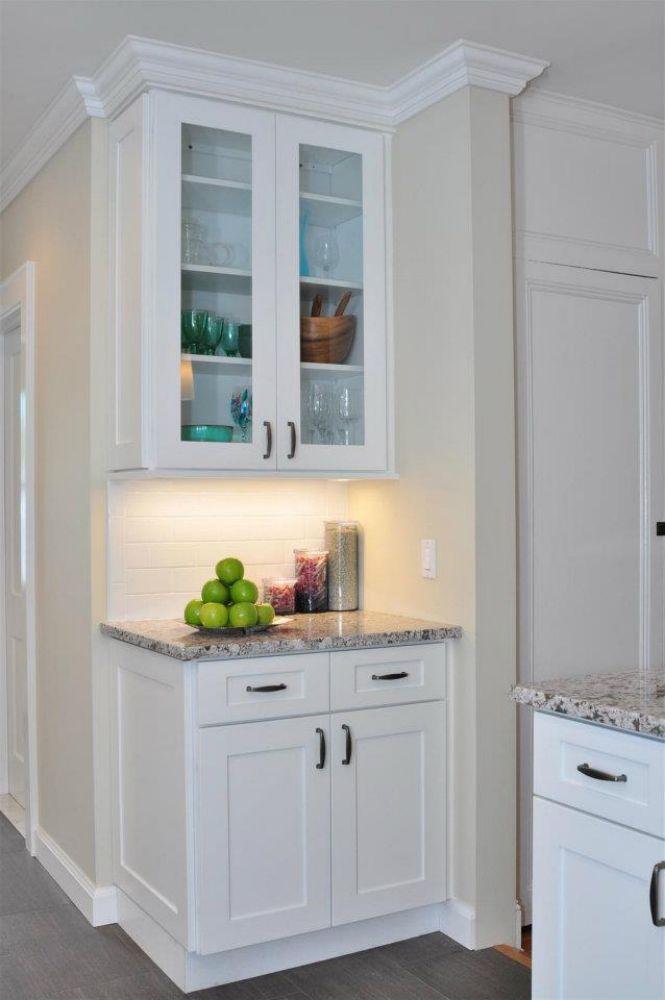Introduction to Mixing Cabinet Finishes
When designing a kitchen or bathroom, homeowners often face the choice between using a single cabinet finish throughout or blending multiple finishes for a more dynamic look. Forevermark, known for its stylish, durable, and affordable cabinetry, offers a wide variety of finishes across its collections. One of the popular selections is the Forevermark Petit Brown, a warm and rich tone that provides depth and sophistication. But many homeowners wonder—can Petit Brown be mixed with other Forevermark finishes successfully? The answer lies in understanding design principles, color coordination, and the flexibility of Forevermark’s product line.
Understanding the Forevermark Petit Brown Finish
The Petit Brown finish is a versatile, deep-toned brown that works well in both contemporary and traditional settings. It brings warmth and grounding to a space while maintaining a timeless quality. Its smooth, polished appearance makes it adaptable, whether used for full kitchens, accent pieces, or islands. Because of its darker tone, Petit Brown pairs well with both lighter and contrasting finishes, giving homeowners design flexibility. Before considering mixing it with other Forevermark finishes, it is essential to understand how its depth of color interacts with lighter neutrals, grays, whites, or even bold accent tones.
Why Mix Cabinet Finishes?
Mixing finishes has become a popular design trend, and for good reason. Homeowners no longer want cookie-cutter kitchens—they seek personalized, unique, and dynamic spaces. Combining different cabinet finishes can achieve several goals:
-
Visual contrast: A darker base with lighter uppers can make a kitchen feel larger and more balanced.
-
Focal points: An island in a contrasting finish can serve as a centerpiece.
-
Textural variety: Mixing wood tones and painted finishes adds richness.
-
Style flexibility: Blending modern and classic finishes creates a transitional design that appeals to many tastes.
Forevermark offers a wide range of finishes, making it possible to achieve all of the above when pairing Petit Brown with other options.
Pairing Petit Brown With White Finishes
One of the most common and effective combinations is mixing Petit Brown with a white or off-white finish. Forevermark collections such as Gramercy White or Uptown White complement Petit Brown beautifully. The deep richness of Petit Brown grounds the design, while the crisp white brightens the space, creating balance. This pairing works particularly well when used with white uppers and Petit Brown lowers or when Petit Brown is used on an island against a backdrop of white cabinetry.
Pairing Petit Brown With Gray Finishes
Gray has become a staple in modern kitchens, and Forevermark offers finishes like Ice White Shaker and Greystone Shaker that provide subtle contrast to Petit Brown. Lighter gray tones create a calm, contemporary aesthetic, while darker grays offer a moody, sophisticated look. The coolness of gray tones balances the warmth of Petit Brown, making this a versatile and stylish combination. A kitchen that combines Petit Brown base cabinets with gray uppers can achieve both warmth and modernity.
Pairing Petit Brown With Natural Wood Finishes
For homeowners who prefer a rustic or organic design, mixing Petit Brown with natural wood finishes is a smart approach. Forevermark offers options with wood-inspired tones that, when paired with Petit Brown, add depth and variety. The key is to ensure the undertones of the finishes don’t clash. For example, Petit Brown pairs better with warmer-toned woods than with cooler, red-based finishes. Blending these tones works well in farmhouse-style kitchens or transitional designs where warmth and authenticity are desired.
Using Petit Brown as an Accent Finish
Another design strategy is to use Petit Brown as an accent rather than the dominant finish. For example, homeowners may opt for an all-white or light-gray kitchen but incorporate a Petit Brown island or pantry cabinet. This approach creates a bold focal point without overwhelming the space. It also adds a layer of richness, preventing the kitchen from feeling too stark or monochromatic. Accent usage is one of the easiest ways to introduce Petit Brown alongside other Forevermark finishes.
Transitional and Modern Design Benefits
One of the strengths of mixing Petit Brown with other finishes lies in its adaptability to different design styles. In transitional kitchens, combining Petit Brown with whites and grays offers a balanced, timeless aesthetic. In more modern spaces, Petit Brown paired with glossy finishes or matte blacks provides a sleek, bold look. Because Forevermark cabinets are designed with both versatility and affordability in mind, mixing and matching styles and finishes is a viable option for homeowners on a range of budgets.
Practical Considerations When Mixing Finishes
While mixing finishes can elevate a kitchen’s design, it’s important to keep practical considerations in mind:
-
Lighting: Dark finishes like Petit Brown may make a room feel smaller if not paired with adequate natural or artificial lighting.
-
Balance: Mixing should feel intentional. A good rule of thumb is to use one finish as dominant and the other as an accent.
-
Flow: Consider how finishes will look not just within the kitchen but also in adjoining spaces like dining or living rooms.
-
Cabinet Style Consistency: While finishes can differ, cabinet door styles (such as shaker or raised panel) should remain consistent for cohesion.
How Designers Approach Mixing Petit Brown With Other Finishes
Professional kitchen designers often recommend pairing Petit Brown with complementary neutrals while keeping hardware and countertops in mind. For example, brushed nickel or matte black hardware pairs well with Petit Brown and most lighter finishes. Countertops in white quartz, granite with brown veining, or even light gray surfaces provide additional harmony. Designers typically emphasize balance—too much contrast can feel disjointed, while too little variation may look flat. Petit Brown’s depth allows it to function as either the anchor or the accent, depending on design goals.
Long-Term Value of Mixing Finishes
Beyond aesthetics, homeowners should also consider long-term value when mixing cabinet finishes. Kitchens with well-executed mixed finishes often stand out in the real estate market, appealing to buyers who appreciate a custom look. Forevermark’s affordability and durability make Petit Brown an attractive choice for blending, allowing homeowners to achieve a high-end feel without overspending. Mixing Petit Brown with other Forevermark finishes can therefore be both a stylistic and financial advantage.
Conclusion
Yes, you can mix Forevermark Petit Brown with other Forevermark finishes, and doing so can enhance both the aesthetic appeal and functionality of your kitchen. Whether paired with crisp whites for brightness, grays for modern contrast, or natural wood tones for warmth, Petit Brown proves to be versatile and timeless. Used as either a primary finish or an accent, it adapts well to various design approaches. By keeping balance, lighting, and style consistency in mind, homeowners can create a kitchen that feels unique, harmonious, and long-lasting.
Read: How To Make A Galley Kitchen Shine With Forevermark Petit Brown?
Read: Is Forevermark Petit Brown Ideal For L-Shaped Kitchen Layouts?
Frequently Asked Questions
Q1: What Forevermark finishes pair best with Petit Brown?
A1: Petit Brown pairs beautifully with Gramercy White, Uptown White, Greystone Shaker, and natural wood finishes for balance and contrast.
Q2: Can Petit Brown be used only as an accent finish?
A2: While it works well as an accent, Petit Brown can also serve as the primary finish, particularly in larger kitchens with good lighting.
Q3: How do I balance dark Petit Brown cabinets with lighter finishes?
A3: Designers recommend using Petit Brown on lower cabinets or an island while keeping uppers in lighter tones to create contrast and openness.
Q4: Will mixing Petit Brown with other finishes affect resale value?
A4: A well-executed mix can actually increase resale value, as buyers often appreciate kitchens that feel custom and thoughtfully designed.
Q5: Should the cabinet door style remain consistent when mixing finishes?
A5: Yes, it’s best to keep the door style consistent—such as shaker or raised panel—while mixing finishes to maintain visual harmony.

